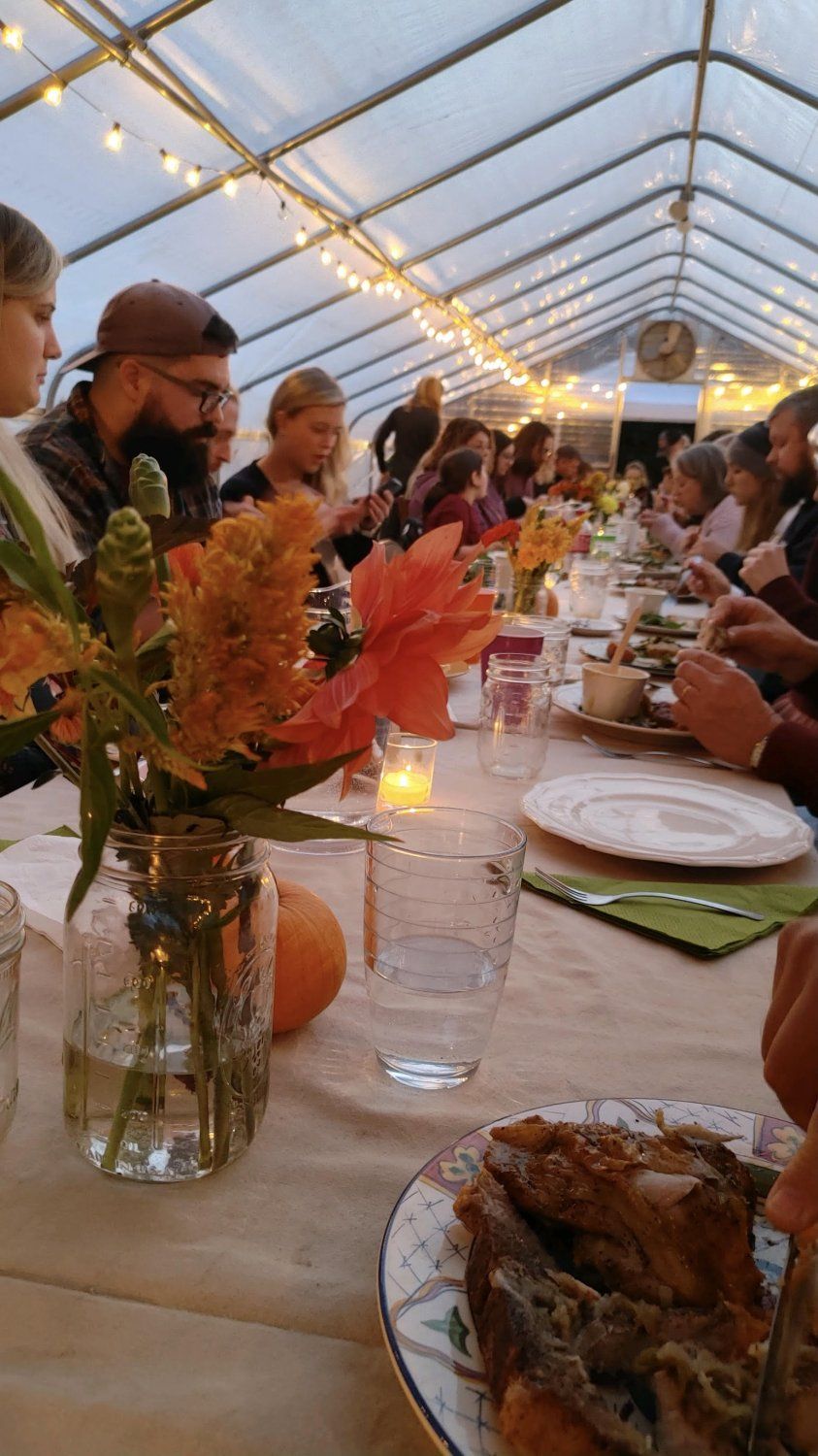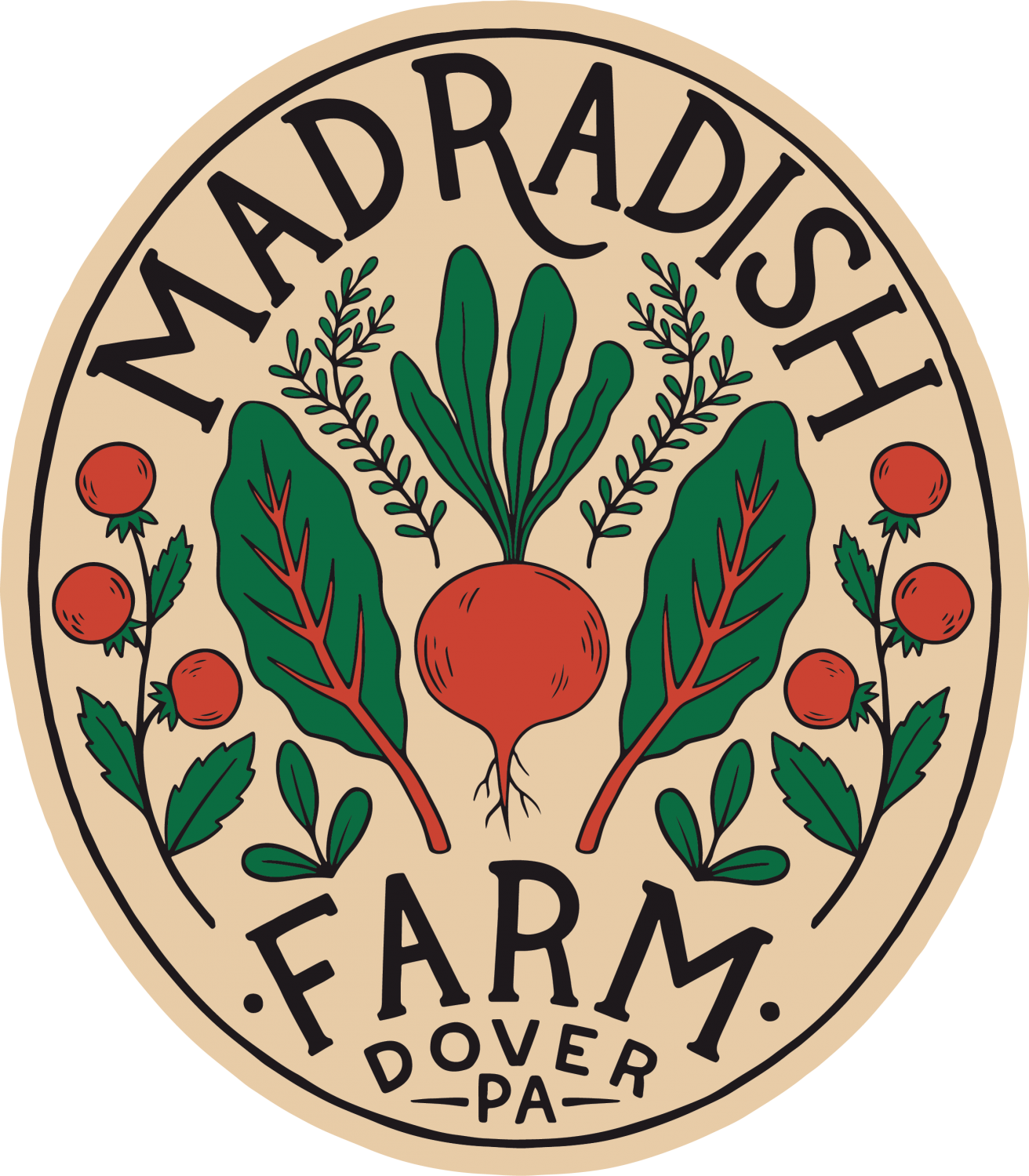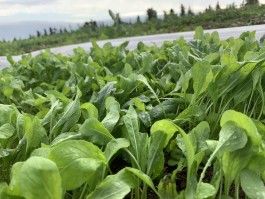Some folks have asked about how happy we are with the offerings of the CSA, and how things did this year on the whole. The short answer is, for our first year, we think things went pretty well overall. But the true, long answer is much more complicated. The final outcomes of many crops were frustrating to say the least, and there was so much that we weren't able to offer that we wanted to. For instance, fall brassicas have been extremely tricky. I would ideally like to have lots of broccoli, cauliflower, cabbage, kohlrabi right now, but it wasn't to be this year. Plants are stagnant, though we have lots of broccoli planted, they are stressed with disease. They're slowly and sporadically just now starting to head up, but I'm still not sure what we'll get.
We have struggled with the fertility of the fields this year, particularly the field that has been row cropped (Corn/wheat/soy) for years. After doing a soil test last year, we saw that it was acidic and had a pH of just 5.2. With this knowledge we amended with a heavy rate of lime in fall 2020, and added more lime this spring before planting. We've added many other amendments as well, but nothing would be enough to make the difference in one year. It is clear that the pH has been a strong limiting factor on the growth of plants. They aren't hardy, vigorous, or robust. Many crops (again, not all, but many) are weak, show poor/slow growth, and are very susceptible to pests and diseases. After further studying of the soil test this fall, we have hypothesized that build up of aluminum overtime in the field (possibly due to conventional/monoculture management) is part of the problem. Severe soil compaction seems to be another factor hindering root growth.
So now the question is: What are we doing about it? What is our long-term plan, what are we up to?
Our main focus is increasing soil health rapidly. Improving the health of our soil is the only way to grow healthier, more productive plants (i.e. more food for you!) Right now we're working on making beds for next year, which means lots of organic matter, including mushroom soil and wood chips. Wood chips are primarily going in the pathways and on top of the soil surface as a mulch. As the chips break down they'll feed soil microbes, increasing soil biology. Feeding the soil biology is ultimately what we’re after, as they’ll help us grow the best vegetables possible.
Controlling weeds is a big thing on our minds, too, which in the short term we’ve been doing with the plastic mulch layer. The plastic layer is not something we’d like to use for more than a couple of years and will phase it out entirely, in favor of mulches like mushroom soil, wood chips, straw and leaves. We’ll use these to control weed growth and in a few years expect to see a drastic decrease in weed pressure. The long-term plan is to build up our beds with compost and mulches that will break down over time, feeding the soil and creating ideal conditions for growing vegetable crops.
We’re grateful for our CSA members who have supported us through this learning experience on brand-new (to us!!) land. Our goal is to make the member experience better with each new season. That means a more diverse selection, higher quality vegetables, and, as we get better at this, longer availability windows for each crop that we grow! Our members are the heart of our farm and always will be, no matter how much we grow on this land.




